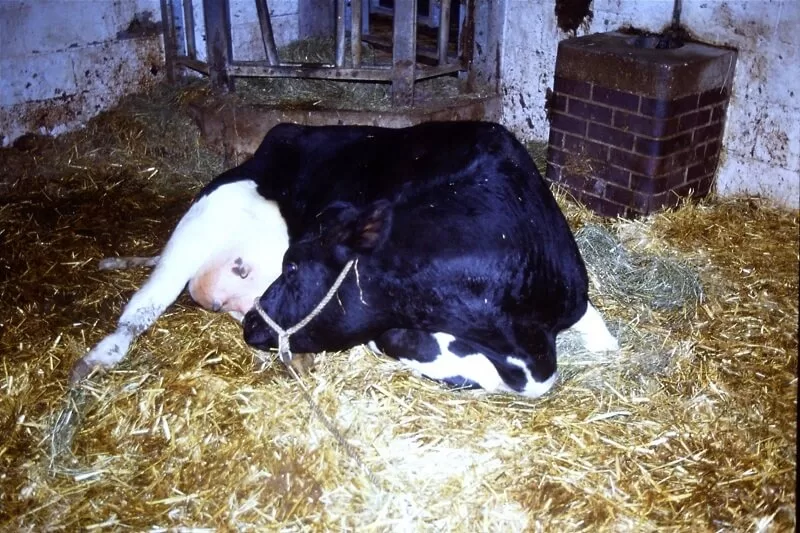Milk Fever is a non-infectious disorder that is caused by insufficient calcium and commonly occurs around calving. Generally, it occurs within the first 24 hours post-calving but still can occur two to three days post-calving.
Animals Affected
Cows that have recently calved.
Goats and pigs in similar conditions may be affected occasionally.
Signs and Symptoms

These are shown from 12 to 72 hours after the cow calves are down. They are as follows:
- Dullness
- Animals tremble due to muscular twitching.
- Staggering as the animal moves.
- The animal falls down and becomes unconscious.
- Laying down of the animal on its side and its whole body stiffens.
- Body functions such as urination and milk secretion stop.
- Stomach contents are drawn into the mouth which later causes lung fever when breathing in.
- There is a loss of appetite.
- Sudden death if not treated immediately.
Control and Treatment
- Treatment
- When it comes to treatment, the animal is given an intravenous injection of soluble calcium salt in the form of calcium boro gluconate 60gms dissolved in 500 ccs of water which is boiled and then cooled.
- Nursing Care
- When it comes to nursing care, the sick animal should be kept in a comfortable position resting on its sternum.
- Mechanical removal of urine will also speed up recovery and fresh water should also be given.
- An animal suffering from milk Fever should not be given medicine orally through the mouth due to the following reasons:
- The animal will not be able to swallow the medicine.
- The medicine may get into the lungs, promoting lung fever, and eventually speeding up death.
How Can You Prevent Milk Fever?
In the case of cows with past cases of milk Fever, partial milking is done for the first ten days.
Therefore, give the high-yielding cows rations containing phosphorus and calcium. This should include mineral licks and mineral-rich forage crops such as Lucerne.
High doses of Vitamin D and parathyroid extractions help to prevent this condition.
- Who is DR. William Samoei Ruto? Age, Net worth
- Tavares Jones bio-wiki, age, children, wife, net worth, career.
- Jackson Dill WSVN -7 news, age, children, wife, net worth.
- Fran Drescher Age, Family, Husband, Children, Movies, Fame, Net worth
- Elizabeth MacDonald Bio, Wiki, FBN, Age, Education, Height, Family, Husband, Children, and Career
- ‘Jumanji’-themed park to open next year
- Ken Clark Bio-Age, Edu, Children, Wife, Net Worth.
- A list of special secondary schools, and contacts.
- List of Accredited Private Universities in Kenya
- Public Universities in Kenya
- Kenya Medical Training College, courses, requirements.
- Egerton university, fees, location, courses.
- Best Public High Schools in Kiambu County.
- What is the history of Kenyatta University?